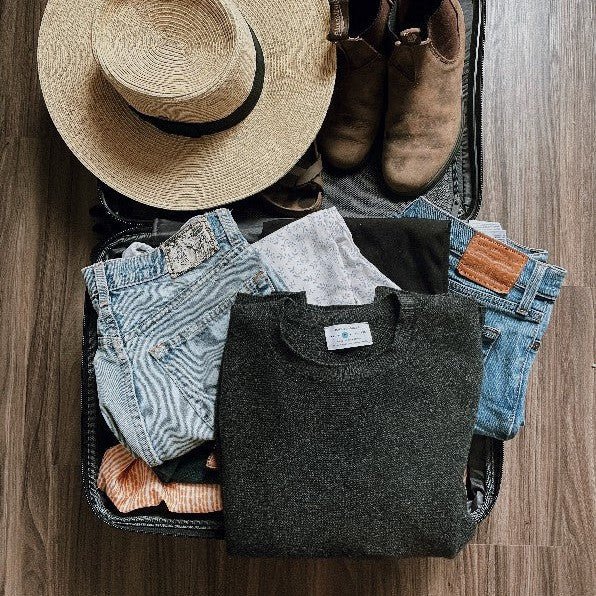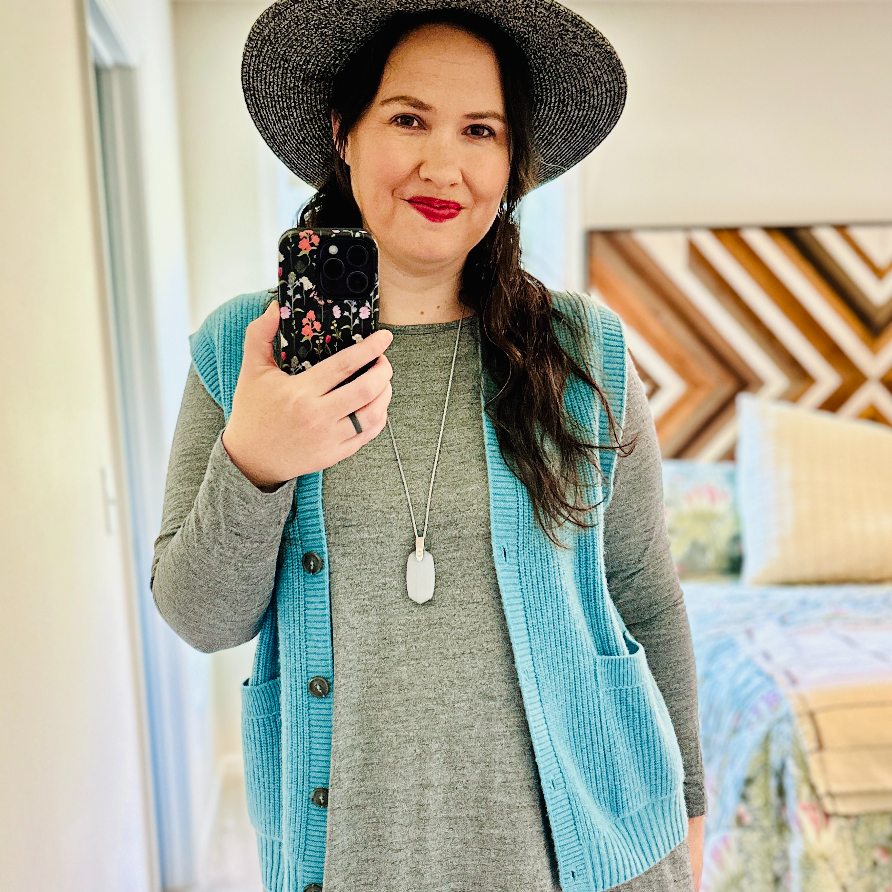3D-Knitting Guide To Seamless Clothing
3D-knitting is the best manufacturing innovation since the 1860s sewing machine.
March 10, 2022
By Oliver Charles
Why Oliver Charles 3D-Knits Sweaters
Introducing a 4-part blog series about 3D-knitting.
While 3D-knitting remains more expensive than cut-and-sew and other forms of high volume manufacturing, we strongly believe it’s worth it.
- Guide To 3D-Knitting
- Why 3D-Knitting Is Worth It
- On-Demand = No Inventory Waste
- 3D-Knitting Has Unlimited Potential
----------
Before the mid-nineteenth century, the vast majority of Americans handmade their clothing.
Only the elite could afford custom tailoring, and ready-made apparel was few and far between. It wasn’t until the sewing machine (paired with standard sizing innovation) hit the market in the 1860s, that the clothing industry started to become what we think of today.
You could say that the sewing machine changed the game forever.
Literally forever.
As in, the process for manufacturing clothes has barely changed since the 1860s.
Sure, the speed with which clothes are produced has been steadily accelerating. By the 1870s, the value and output of clothing produced in NY - the epicenter of American garment manufacturing - had increased six-fold.
By 1957, Americans were spending over $25 billion on clothing.
But the side effects of innovation focused on speed led to many of the nightmare images often associated with garment manufacturing: sweatshops, protests, gross environmental negligence and destruction, and outsourcing.
By the late 1980s, the US couldn’t compete with the low cost of labor in markets like China and South Korea, and ultimately most US garment manufacturing was sent overseas.
Today, clothing is largely produced in the same way - quickly, cheaply, and hazardously.
The focus on low-cost labor and high-quantity output has resulted in the mass production of fast fashion products that wear quickly and go out of style even faster.
This reality has had a detrimental impact on the environment both in terms of production emissions and consumer waste.
As the latest trends become more and more accessible to the average consumer, yesterday’s trends are filling up landfills faster and faster.
For context, in the 1980s, the average American bought 12 new articles of clothing each year. Today, that number has increased to 68.
But American’s aren’t just continually filling their closets, they’re purging old styles at an alarming rate.
Collectively, we’re only keeping each garment half as long as we were just 20 years ago, resulting in an unmanageable surge in waste.
Fast Fashion To Slow Fashion
Consumers are becoming more aware of the environmental and societal impacts of the clothing they buy. With knowledge comes power, and consumers are striking back with their wallets by ditching fast fashion brands and investing in products that will stand the test of time for both comfort and style.
In fact, according to Business Insider, “47% of internet users worldwide had ditched products and services from a brand that violated their personal values.
Protecting the environment topped that list.”
The problem, of course, with manufacturing these types of products is cost.
Sustainably creating high-quality, lasting products is expensive for everyone involved, from the business to the manufacturer, to the consumer.
The industry needs to catch up with the changing sentiment of consumers and move away from traditional manufacturing practices.
In other words, it’s time for real, impactful innovation in the garment industry - something that sustainably creates high-quality products at an affordable rate.
3D-Knitting Vs. Today's Standard
Today, garments are usually sewn together piece by piece using the same cut and sew technology of the past century.
Take a sweater for instance. The torso, the neck, and the sleeves are all individually sewn and then stitched together a la Frankenstein.
This is why most garments you own have stitching along the shoulders, down the sides, and around the neckline.
“Why is that bad?”, you might ask. Well, for one, it creates itchy stitching and inconsistency in sizing for consumers.
For another, the multiple stages of cutting, sizing, and sewing creates substantial waste.
Finally, it forces the reality that the materials and labor for traditional cut and sew manufacturing need to remain inexpensive to keep consumer costs low.
If so much material and time are wasted in this multi-step process, these inefficiencies need to be offset by cheap materials, cheap labor, and high product turnover.
Increasing accessibility to bespoke/MTM clothing is a key initiative that supports sustainable slow fashion.
— Jack Paley (@jackopaley) May 19, 2021
Read about the role bespoke/MTM tailoring plays in a world of off-the-peg options. Reminds us of the role 3D-knitting plays in a world filled with cut-and-sew options. https://t.co/0jdNSV00LB
3D-Knitting Is The Solution
WHOLEGARMENT® Manufacturing is exactly as it sounds: it's a manufacturing technology that creates the whole garment in a single process.
Take the sweater example. Unlike traditional cut and sew, WHOLEGARMENT® produces the sweater in its entirety, eliminating both excess waste and the need for any extra steps.
WHOLEGARMENT® technology was first introduced in 1995 by its creator, Japanese manufacturer Shima Seiki, and the first 3D WHOLEGARMENT® knitting machine entered into operation in 2015.
Since then, the technique has been adopted by brands small and large, including leading comfort brands like Uniqlo and Patagonia.
Using Shima Seiki’s technology, designs are programmed into the system, and the garment production is fully automated with 3D knitting.
The result is a fast, seam-free, and eco-friendly manufacturing option that produces immediate ROI for businesses, consumers, and the planet.

3D-Knitting Benefits Customers
People are living and working longer, spending more hours in the (at home) office, and looking for clothing that intersects comfort, durability, and style.
We know that the average American throws away about 80 lbs of clothes each year - but we also know that they don’t particularly want to.
With WHOLEGARMENT®, consumers can expect a comfortable, durable seamless garment with an increased range in motion and lightweight fit.
The 3D technology also enables precision fit, so there’s less concern over unexpected size discrepancy and the risk of stretch.
WHOLEGARMENT® manufactured clothing also checks the personal values box: it’s cleaner for the environment and it promotes local, US-based manufacturing.

3D-Knitting Is Sustainable
According to the Guardian, “the fashion industry is responsible for about 10% of all greenhouse gas emissions, 20% of all wastewater, and consumes more energy than the airline and shipping industries combined”.
The numbers speak for themselves. According to Tailored Industry, one of the leading WHOLEGARMENT® manufacturers in the United States, their 3D knit, WHOLEGARMENT® approach reduces CO2 emissions by 50%. It also reduces their electrical usage by 43% and their material waste by 93%.

3D-Knitting On-Demand With 0 Waste
WHOLEGARMENT® technology provides businesses the ability to fully customize and digitally simulate designs before manufacturing.
This means more accurate sizing and on-demand updates. These efficiencies extend throughout the manufacturing process to reduced material use, decreased labor time, and faster, more effective quality control.
Additionally, while a globally recognized approach, WHOLEGARMENT® is especially taking off in the US.
Businesses now have more and more opportunities to prioritize sustainable, local manufacturing at a time when consumers are willing to spend more for a “Made in America” tag.
Last, the “sustainable” efforts of some of the world’s largest fast fashion brands are coming under fire for misleading marketing and some brands are being “canceled” for unethical/unsustainable business practices.
Opting for WHOLEGARMENT® has the potential to greatly reduce the manufacturing carbon footprint of apparel companies - a tangible outcome that consumers can get behind.
If you believe that every good wardrobe starts with owning less and owning better, consider buying yourself an OLIVER CHARLES sweater.
Shop Now7 Day Challenge: Easy Outfit Repeating In My Khullu Waffle Knit
For moms like me who have a lot going on and need a dependable, always appropriate sweater to wear all the time.
Read moreYour WFH Fashion Essential: The Workleisure Sweater
How this sustainable sweater fits my work from home lifestyle.
Read moreThe Go-To Addition To My Work From Home Capsule Wardrobe
Introducing the new Summer Cardigan Vest, the perfect work-from-home sweater.
Read more



